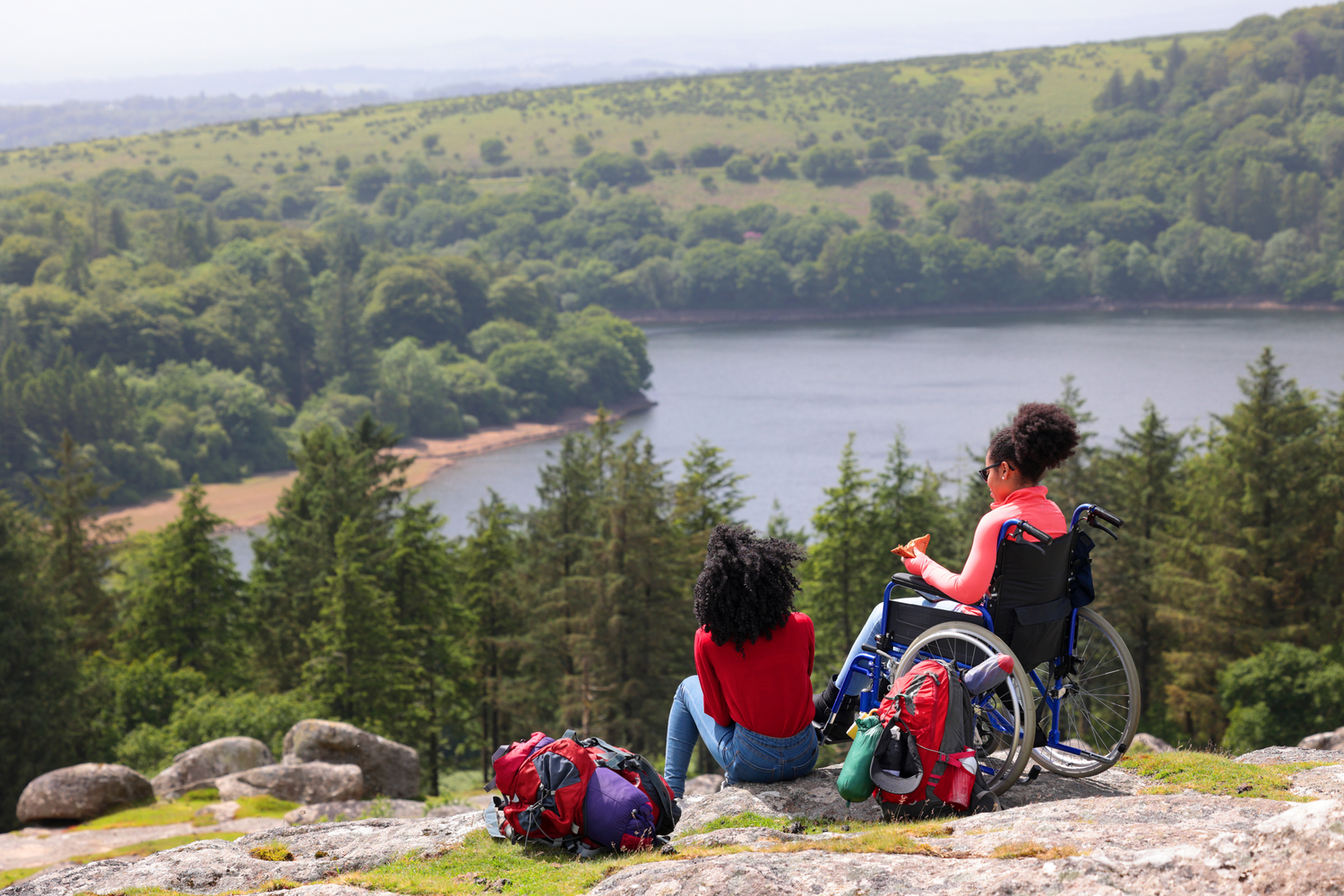Opening the Outdoors

Photo by Jimell Greene
Opening the Outdoors
Jeremy Buzzell of the National Park Service ensures that America’s iconic locations are accessible for all
Picture Yosemite National Park. Even if you’ve never been, you can probably summon an image of the majestic valley defined by sheer cliffs and massive waterfalls. What about Yellowstone? Old Faithful’s regular eruption comes immediately to mind. The orange hoodoos of Bryce Canyon, wildflowers of Glacier, and jagged peaks of the Grand Tetons—these iconic sites are all managed by the National Park Service. Each sparks what Jeremy Buzzell calls an “Aha!” moment—and it’s his job to make sure every national park visitor can share in those experiences.
Buzzell (’97), a branch chief for the National Park Service (NPS) in Washington, D.C., runs the Park Accessibility for Visitors and Employees (PAVE) program. NPS manages 431 national parks, monuments, seashores, and historical sites. Those properties comprise 85 million acres and attract more than 300 million visitors annually—10 to 20 percent of whom have a disability, NPS estimates. Each property has unique features—and unique management challenges. “The Grand Canyon is not the same as the Statue of Liberty,” Buzzell says.
PAVE offers the entire park system a common resource: a team that can provide technical assistance, consultation, and training to improve the accessibility of some of America’s most popular destinations.
On the National Mall, NPS installed a tactile model at the Franklin Delano Roosevelt Memorial for visitors who are blind. At Sleeping Bear Dunes National Lakeshore, in Michigan’s Northern Lower Peninsula, they helped design an accessible kayak and canoe launch. At Kentucky’s Mammoth Cave, where some tours descend hundreds of stairs and crawl through narrow passages, they created a half-mile trail for visitors with walkers or in wheelchairs.
“Oftentimes it is what we are preserving itself that presents the accessibility barrier, so we have to use a lot of creativity,” Buzzell says.
At Yosemite National Park, a signature experience is taking in a panoramic view of the valley. At the park’s Glacier Point, the parking lot and trail to the overlook meet accessibility codes, “but if the experience of being at Yosemite is seeing that view, then we’ve got to make sure that we can convey that to a person,” Buzzell says. NPS staff identified this barrier for visitors who are blind and came up with a solution: three-dimensional bronze topographic models, oriented to each view, allow visitors to feel the contours of the valley from different points in the park.

Photo from Getty Images
Buzzell’s interest in accessibility began in high school, when he was cast in a school production of Children of a Lesser God. He studied sign language for his role as a teacher at a school for the deaf, which led to volunteer and job opportunities working with the Deaf community and then to BU Wheelock’s special education program.
Before NPS, Buzzell worked on special education and accessibility policies for the US Department of Education, Department of Homeland Security, and the Library of Congress. Joining NPS in 2014, he says, merged his professional life with a love of the outdoors. He had spent several years of his childhood in North Carolina’s Blue Ridge Mountains, frequently hiking and camping with friends, and he has vivid memories of a family road trip through Colorado’s Rocky Mountains and Mesa Verde.
Buzzell uses an expansive definition of “accessible” as he tries to make the shared experiences of the national parks available to all. There’s the legal code of the Americans with Disabilities Act—which he calls the “baseline” for their work—and then there’s the question of how they can go beyond that. “If there’s a bathroom at the bottom of the Grand Canyon, we should make that bathroom accessible,” he says. “It’s not up to me to decide what your limits are as a human.”
Comments & Discussion
Boston University moderates comments to facilitate an informed, substantive, civil conversation. Abusive, profane, self-promotional, misleading, incoherent or off-topic comments will be rejected. Moderators are staffed during regular business hours (EST) and can only accept comments written in English. Statistics or facts must include a citation or a link to the citation.